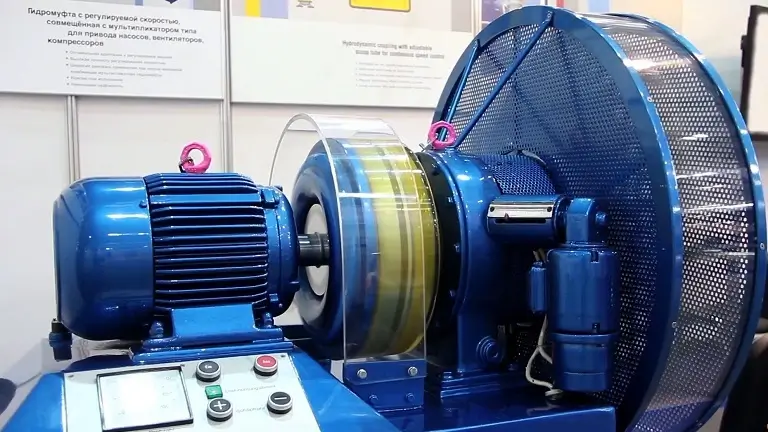What is a Variable Speed Pool Pump?
A variable speed pool pump is a type of pool pump that allows users to adjust the speed at which the pump operates. It is widely visible in local communities where pools are common.
Usually, people use the variable speed pool pump for water transfer, filtration, and raising water. It can help empty or fill the pool in the shortest time. The design and structure of a high-quality pool pump are unique and efficient. These features enable the pump to run at different speed settings throughout the day.
Key Features
- Adjustable Speed Settings: Users can set the pump to run at various speeds, usually ranging from low to high, depending on the task (e.g., filtering, heating, or cleaning).
- Energy Efficiency: By running at lower speeds for longer periods, variable speed pumps can significantly reduce energy consumption compared to traditional single-speed pumps.
- Quiet Operation: Lower speeds often result in quieter operation, making for a more pleasant poolside experience.
- Extended Equipment Life: Running at lower speeds can reduce wear and tear on the pump and other pool equipment, potentially extending their lifespan.
- Customizable Performance: Users can optimize the pump’s performance for specific tasks, such as water circulation, filtration, or even operating water features.
Benefits
- Cost Savings: The energy efficiency of variable speed pumps can lead to lower electricity bills.
- Environmental Impact: Reduced energy consumption is better for the environment.
- Improved Pool Maintenance: Enhanced control over water circulation can lead to better water quality.
We fall into a dilemma when finding or choosing the best variable speed pool pump. There are hundreds of pool pumps with variable speeds currently hitting the market. But not all of them meet your requirements. So, we researched the market and found some key features. These features will help you choose the right one for you. Read below for detailed information:
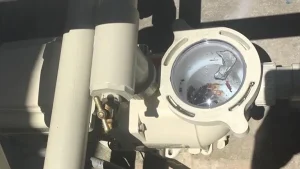
How Does a Variable Speed Pool Pump Work?
A variable speed pool pump operates using a motor that can adjust its speed based on the specific needs of the pool. Here’s how it works:
Components
- Motor: The heart of the pump, it can vary its speed based on user settings.
- Controller: A digital or analog device that allows users to set the desired speed and schedule for the pump.
- Impeller: The part that moves water through the system; its performance is influenced by the motor speed.
Operating Mechanism
- Speed Adjustment:
- The user selects a speed setting via the controller. This can be done manually or programmed for specific times.
- The pump can operate at a low, medium, or high speed, depending on the task (e.g., filtration, heating).
- Water Circulation:
- When activated, the motor spins the impeller at the selected speed, drawing water from the pool.
- Water is pushed through the filtration system and returned to the pool.
- Efficiency:
- At lower speeds, the pump operates more efficiently, using less energy while still effectively circulating the water.
- Users typically run the pump at a lower speed for longer durations for regular filtration and at a higher speed for tasks like vacuuming.
A variable speed pool pump offers flexibility and efficiency, allowing for optimal water circulation while saving energy and reducing costs.
Types of top-rated Variable Speed Pool Pumps:
Water pumps for the pool usually are three different types depending on speed settings. These are:
Single or mono speed:
Single-speed pumps work at a single constant speed. These are the cheaper versions of pool pumps. These pumps run with an induction AC motor by spinning the impeller. Usually, these pumps last for a long time. But comparatively, these are not as effective as other variables. Besides, you will need to count more money every month to pay for the electricity bill. The noise production is another dissatisfaction.
Dual-speed pool pump:
Double speed – that means you can run the pool pump at both slow and high speeds. It is almost similar to the mono-speed poop pump. It has an induction-style electric motor. You can change the speed settings with the frequency inverter and toggle switch. The low speed of the impeller is 1700+ rpm, and the high is 3400+ rpm.
In this pump, the low rate helps with the necessary filtration of water, and the high rate helps with using a pool heater. However, the double speed pool pump is a bit expensive than the single one. You need to change the settings manually.
Variable speed pool pump:
This is the best version of pool pumps. It is blessed with modern technology alongside full features. A variable speed pump helps to save electricity and money. You don’t need to run this pump the whole day. Even it is suitable for keeping pool water clean and fresh. The machine runs with a 230V permanent magnet motor (PMM). There are lots of benefits of a variable-speed pool pump. We are going to share them with the rest of the buying guide. A notable backward of this pump is that you may need to pay more for first-time installation.
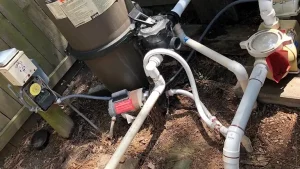
Why should I buy the best variable-speed pool pump?
Of course, there are different variations of pool pumps. Why should you choose this one only? Here are some positive aspects of buying a high-quality variable-speed pool pump:
Low power consumption:
Single- or double-speed pool pumps are required to be run throughout the day. They have little power to drag only a tiny volume of water. However, variable speed pumps have both low and high settings and use the same electricity. The power consumption is lower than that of other devices. If you reduce the pump RPMs for low flow, the energy usage will be low. Besides, you can drag more water than the respective pumps. So, again, you are saving electricity.
High-quality filtration:
We need to change the pool water very often. It helps filter the water to separate dirty or impure elements from the pool. Variable speed pumps for the pool do the work. You don’t need to purchase other filtering services. You need to calculate a few things and start filtering water. The runtime, water balance, use of the pool, pump horsepower, etc., are the defining matters for saving money for water filtration. Variable speed pool pump filters water with less power usage.
Versatility:
It doesn’t matter what type of pool cleaning system you use. Variable speed pool pumps work very well with these cleaning systems because they are designed to work with any cleaning method.
Remote monitoring:
Remote monitoring is the latest addition to multiple-speed pool pumps. Some pumps have this trendy feature that allows you to control the pump with your cellphone. The user interface helps to let you know about pump RPMs, runtime, power usage, etc. You can also set programs for the pump.
Control settings:
Pre-added built-in program settings give you better control. You can operate the machine on your own. The variable speed pool pump is an excellent device for efficient control settings. With these control settings, you can set a timer, speed, etc.
Silent operation:
It’s not like the pool pump works without any sound. It’s quite impossible to make an entirely sound-free mechanical device. Single-speed pool pumps can’t run at a lower speed like variable ones. So, the noise is surely reduced in variable-speed pool pumps. You can run the device for a long time with fewer sounds. This is very helpful for our ears.
Durability:
Multiple-speed pool pumps create less heat during operation. The motors are fan-cooled. The enclosed motors protect internal parts from unexpected damage. In single or dual-speed pool pumps, induction motors have vents. Water and other debris can enter the inner side of the devices. Thus, they lead to damages. So, comparatively, variable speed pumps are more durable and sturdier to get damage.
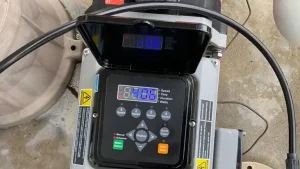
Best Variable Speed Pool Pump Buying Guide 2024
Well! We are not letting you go with frustration. With so many benefits, variable-speed pool pumps have been the top choice for consumers. There are several factors to notice when buying top-rated variable-speed pool pumps.
Pool size and features:
Most of the time, pool owners forget to measure the pool size. A low horsepower pump can’t work consistently for a large size pool. You may reduce the lifespan of the pool pump by using improperly powered pumps. So, it would be best if you chose it accordingly. Many swimming pools have attractive features like fountains, heaters, waterfalls, etc. If your pump comes from a quality brand, it can integrate with the control systems for these features.
Energy savings:
Top-level variable speed pool pumps are energy efficient. They can run at both high and low RPM to match your needs. Cleaning or running water in the pool becomes interesting while you remain tension-free. Most quality pumps can save electricity bills at 20-90%. So, you should check this while buying a new pool pump. There will be an energy efficiency label on the product. Also, you can see the required electricity rate in the product manual.
Installation
You should know that these pumps require professionals to install in your pool system. You can hire professionals to install a pool pump. But nowadays, modern pumps have compact designs that enable easy installation, even for beginners. You may do it yourself but should ask professionals first.
Motor:
We call the engine the heart of the pump. It is the determiner of the ability of a pump. High-quality pumps have potent motors. These motors help to pull a lot of water always without any disturbance. You need to check the engine’s ability.
Usually, a variable speed pump has a motor ranging from ¾ HP to 2.5HP. Large motors have more reliable motors to work in any size pool. The motor voltage range can be 110V or 220V. If your pool is above the ground, 110V is enough for the pump. For a low-lying pool, 220V will be required.
Flow rate:
Flow rate tells how much water a pump can transfer per minute or hour. A great variable-speed pool pump has sufficient GPM (Gallons per minute). Depending on GPM, you can assume how much time you need to empty or fill the water.
For a pool of a larger size, you must choose powerful variable speed pumps. Ordinary pool pumps have a lower flow rate. The time turnover of a pool pump should be 6/8/10 hours. That means the pump will flow water at a specific rate, emptying or filling all the water.
Noise:
You already know variable-speed pool pumps create less noise than other speed pumps. Heavy sound while you run the pump can irritate neighbors. Even people with lousy ear conditions may find it pathetic. So, you should be aware of the machine’s noise level. Low RPM-based variable pumps create shallow sounds. Check the noise level on the product label.
Longevity:
Nobody likes to repair a useful device again and again. Besides, it’s a matter of money and time. Single or double speed pool pumps require frequent maintenance. But if you have chosen the correct pump, it will last longer than those pumps. You can check the warranty option while you buy any product.
Budget:
There is a saying, “Things value most when they are a bit pricey.” Yes, sometimes you may have to pay a lot to achieve good things. But trust us, high-quality variable-speed pool pumps are inexpensive, easy to get, and fit your wallet. There are lots of popular pump brands that offer cheap pool pumps. Just avail them for pool filtration.
Miscellaneous:
Nowadays, pool pumps have many extra features. Strainer baskets, transparent lids, innovative application systems, etc., are some. If you want to cut the time short, you can buy a pump with these features. Moreover, these may make your task easier.
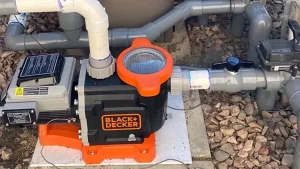
Frequently Asked Questions
What rpm should I run my variable speed pool pump?
The optimal RPM for running a variable speed pool pump typically ranges from 1,200 to 3,000 RPM, depending on the specific tasks. For regular filtration, 1,200 to 1,600 RPM is usually sufficient. Higher speeds of around 2,000 to 3,000 RPM may be needed for vacuuming or operating water features.
It’s best to run the pump at a lower speed for extended periods to maximize energy efficiency while ensuring adequate water circulation. Adjust based on your pool size, pump specifications, and specific maintenance needs.
How To Program a Variable Speed Pool Pump?
Follow these steps:
- Access the Control Panel: Turn on the pump and navigate to the control panel.
- Set Speeds: Select the desired RPM for different tasks (e.g., filtration, vacuuming).
- Program Timers: Set the start and stop times for each speed setting.
- Save Settings: Confirm and save your program.
Consult the user manual for specific instructions related to your pump model.
Are variable speed pool pumps worth the money?
Do Variable Speed Pool Pumps Really Save Money?
Conclusion
Pool pumps with multiple speed settings offer a wide range of facilities. You should select the best variable speed pool pumps accordingly. Our buying guide may assist you in further dealing. Just be careful to match the specs with your needs.
Have a great day!

